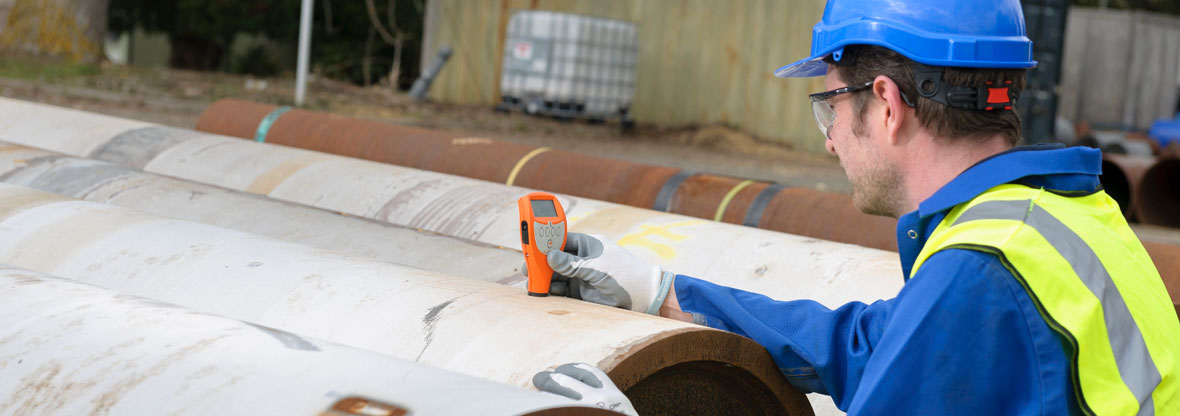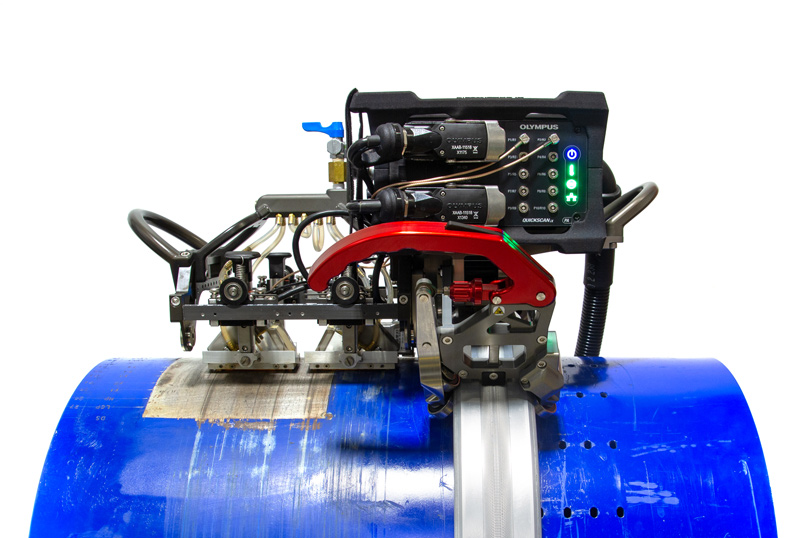Comprehending the Basics of Pipe Welding Assessment: Important Aspects for Examining Weld High Quality and Stopping Failings
In the realm of pipe welding inspection, the stakes are undeniably high, requiring a thorough understanding of essential concepts to ensure weld high quality and mitigate failure threats. Various crucial variables come into play, consisting of the option of suitable materials, the application of innovative inspection methods, and the acknowledgment of common welding issues.
Importance of Weld High Quality
The stability of a pipeline is essentially dependent on the high quality of its welds, making weld high quality a critical consider making certain safe and efficient operation. A pipeline weld serves as a joint factor where products are joined, and any shortages around can result in substantial architectural weak points. Poor bonded quality can result in leaks, tears, and disastrous failings, presenting severe security dangers and ecological dangers.
A number of aspects add to the top quality of a weld, consisting of the option of welding process, the skills of the welder, and the conditions under which the welding is carried out - Pipeline Welding Inspection. Insufficient preparation, incorrect warm input, and contamination can jeopardize weld integrity, resulting in issues such as porosity, insufficient blend, or fractures. For that reason, strict quality assurance measures should be executed throughout the welding process to mitigate these dangers
In addition, the lasting efficiency of a pipeline is heavily affected by the durability of its welds. Top notch welds not only enhance the total stamina of the pipeline yet additionally prolong its life span, decreasing the need for pricey repair work and downtime. Hence, making certain exceptional weld quality is extremely important in pipe design and upkeep methods.
Secret Inspection Methods
Guaranteeing weld top quality requires the execution of efficient examination methods to recognize prospective flaws before they lead to failures. Pipeline Welding Inspection. Amongst the most commonly made use of techniques are aesthetic evaluation, radiographic screening (RT), ultrasonic testing (UT), and magnetic bit screening (MT) Each strategy is and offers a distinct function selected based on the details needs of the pipeline task
Visual evaluation is the initial line of defense, permitting assessors to evaluate surface area conditions, placement, and overall craftsmanship. It is a cost-efficient and quick technique that can expose noticeable defects. Radiographic testing offers a thorough view of internal weld stability by using X-rays or gamma rays to discover subsurface problems. This strategy is specifically effective for identifying voids, fractures, and additions.
Ultrasonic screening employs high-frequency acoustic waves to review the density and integrity of welds, making it optimal for finding interior stoppages. Magnetic fragment testing is a trusted approach for identifying surface and near-surface defects on ferromagnetic products by using electromagnetic fields and great ferrous fragments. By utilizing these key assessment strategies, pipe welding examiners can guarantee the finest quality requirements are preserved, eventually causing much safer and a lot more trusted pipe systems.
Typical Welding Defects
Among the most common flaws are porosity, which occurs when gas entraps in the weld steel, creating gaps that compromise the joint. One more substantial issue is absence of combination, where the weld steel does not sufficiently bond with the base material, endangering the joint's strength.

Fractures are likewise an essential concern, materializing in numerous forms such as warm fractures, cold fractures, and origin splits. Each type presents one-of-a-kind difficulties and requires certain examination methods for detection. Undercut is one more issue that can reduce the weld's cross-sectional location, bring about stress and anxiety focus factors, while slag inclusion occurs when non-metallic product ends up being trapped in the weld swimming pool, detrimentally influencing the mechanical why not try these out residential properties of the weld.
In addition, wrong bead shape can cause unequal stress distribution. Acknowledging these usual defects is important for welders and examiners alike, as very early detection and improvement are vital to guaranteeing the durability and integrity of pipe systems.

Materials and Their Effect
Selecting the ideal products for pipeline welding substantially influences the overall efficiency and dependability of the welded joints. The choice of base metals, filler products, and finishings plays a crucial function in determining the stamina, rust resistance, and longevity of the welds. For circumstances, carbon steel is typically used for its equilibrium of strength and expense, yet it may be vulnerable to deterioration in specific environments, requiring the use of corrosion-resistant alloys or protective coatings.
Additionally, different steel welding calls for mindful factor to consider of thermal growth residential or commercial properties and possible galvanic corrosion. The compatibility of products can significantly influence the microstructure of the weld, resulting in variants in mechanical homes. As an example, stainless-steel uses exceptional deterioration resistance but may require particular filler products to make sure an audio weld joint.
Additionally, the influence of temperature level and environmental conditions on product choice can not be ignored. High-strength steels might shed ductility at raised temperature levels, while low-temperature applications could call for products with improved toughness. Inevitably, comprehending the implications of product options is vital for achieving optimum weld high quality and avoiding failings in pipeline systems.

Governing Standards and Compliance
Regulative requirements and compliance play a critical function in pipeline welding, establishing the framework within which effective and safe visit this site right here practices are kept. These criteria are developed by different companies, consisting of the American Society of Mechanical Engineers (ASME), the American Welding Culture (AWS), and the Pipe and Hazardous Products Safety And Security Administration (PHMSA) Following these laws makes certain that welding treatments satisfy the called for top quality and safety and security standards.
Conformity with governing standards is crucial not only for ensuring the honesty of the welds yet also for shielding the setting and public security. Examiners are entrusted with validating that welding operations abide by these standards via rigorous evaluations of both the procedures and the final welds. This entails reviewing welder credentials, welding procedures, and the products made use of.
Failing to follow recognized guidelines can my website cause considerable repercussions, consisting of expensive repairs, lawful liabilities, and tragic failures. Consequently, organizations need to integrate conformity right into their operational methods, promoting a culture of safety and quality. Normal training and audits are vital parts in preserving adherence to these governing standards, ensuring that all personnel are educated and outfitted to maintain the highest degree of pipe welding top quality.
Conclusion
To conclude, a detailed understanding of pipe welding evaluation is vital for making certain weld high quality and stopping failings. By utilizing vital examination techniques and recognizing common welding problems, inspectors can successfully evaluate the honesty of welds. Consideration of material selection and adherence to regulatory standards even more enhance the integrity and safety of pipe systems. Ultimately, these practices add to the avoidance of leakages and disastrous failings, highlighting the vital significance of strenuous evaluation procedures in pipeline building and construction and upkeep.
In the world of pipe welding inspection, the stakes are without a doubt high, demanding a comprehensive understanding of essential concepts to make certain weld high quality and alleviate failing threats (Pipeline Welding Inspection).The integrity of a pipeline is basically reliant on the quality of its welds, making weld high quality a vital factor in making sure safe and effective operation.A number of variables add to the top quality of a weld, consisting of the selection of welding procedure, the abilities of the welder, and the problems under which the welding is done. Undercut is another flaw that can reduce the weld's cross-sectional location, leading to stress concentration factors, while slag inclusion happens when non-metallic product becomes entraped in the weld swimming pool, detrimentally impacting the mechanical buildings of the weld
In verdict, an extensive understanding of pipeline welding examination is important for making sure weld quality and avoiding failings.